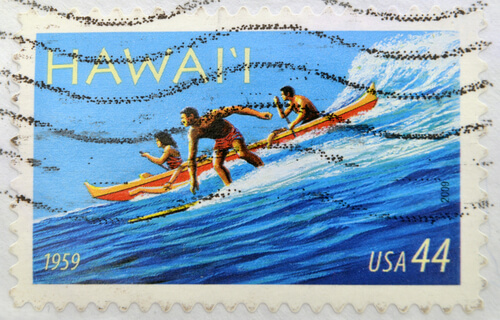 It isn’t just access to all the sun and surf in the state of Hawaii, which marks the 56th Anniversary of its statehood this month, that makes its citizens so healthy. Hawaii proves that universal access to healthcare can have a tremendous impact on the quality of life of a population.
It isn’t just access to all the sun and surf in the state of Hawaii, which marks the 56th Anniversary of its statehood this month, that makes its citizens so healthy. Hawaii proves that universal access to healthcare can have a tremendous impact on the quality of life of a population.
The last state to join the Union, Hawaii was the first to make one of the most progressive moves in the healthcare industry: just 15 years after gaining statehood, it enacted a law requiring all businesses to provide healthcare to employees.
Called the Hawaii Prepaid Health Care Act (HPHCA), the 1974 law requires businesses to provide healthcare for nearly every employee in the state of Hawaii. The PHCA even requires small businesses to cover employees usually classified as part-time. The Federal government’s Affordable Care Act (ACA) misses that mark, setting the standard at employees who work at least 30 hours a week.
The aim of acts like ACA and HPHCA are to promote health and well-being among citizens. Before the enactment of HPHCA, Hawaii had one of the lowest insured rates in the country: just 70 percent. The highest the rate reached after its implementation was 98 percent. As of 2009, the rate had settled around 92.
In 2013, Hawaii had the second-lowest uninsured rate in the nation: just 6.7 percent. This was second only to Massachusetts, which was the second state to offer comprehensive healthcare to its workers, but not until 2006.
The effects of progressive healthcare measures such as Hawaii’s PHCA can be seen in what they do for the citizens of the states. Because nearly all people residing in Hawaii have access to affordable healthcare, even before the ACA was signed into law, Hawaiians are among the healthiest people in the United States.
This sets up a unique comparison to states with higher uninsured rates, such as Texas. Just a year ago, the Los Angeles Times reported on the discrepancies in cancer statistics between Texas and Hawaii. Though there are higher rates of occurrence of cancers such as breast cancer in Hawaii, patients of the state are less likely to die of the disease than those diagnosed and treated in Texas.
Nearly 99 percent of patients at the cancer at Honolulu’s Queen’s Medical Center have insurance. This level of coverage has created a boon in public health for Hawaii but also problems for it in relation to the ACA.
In an effort to make healthcare coverage more accessible to those who need it, the ACA has required that states create online health insurance marketplaces, previously known as health exchanges. If states did not wish to create their own, they could join the Federal health insurance marketplace, HealthCare.gov.
Hawaii’s health insurance marketplace, Hawaii Health Connector (HHC), was created in 2013 through a private contractor. In total, the state has invested $130 million in the project, but because it has such low uninsured rates, it has made it difficult for the HHC to remain self-sustaining.
The ACA requires that all health insurance marketplaces meet certain enrollment targets and be able to make enough money to stand on their own, or to file as non-profit organizations. However, Hawaii’s success as a progressive healthcare provider for its citizens has led it to begin planning the shutdown of the Health Connector and the transition to the HealthCare.gov.
By the end of this year, Hawaii expects to have all its data archived and equipment shut down. The one hiccup in the move will be that the 38,000 Hawaiians who enrolled through the HHC will have to re-enroll through the Federal system.
Hawaii’s long history of progressive healthcare should not be marred by its transition from a private health insurance marketplace to the Federal one. Its commitment to providing healthcare for its citizens stands as an example to all states.